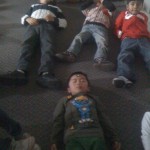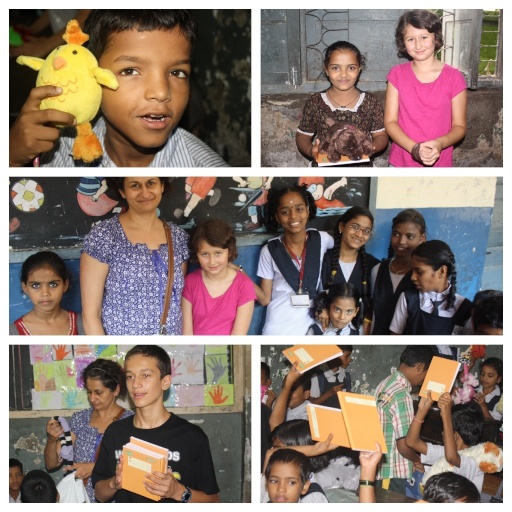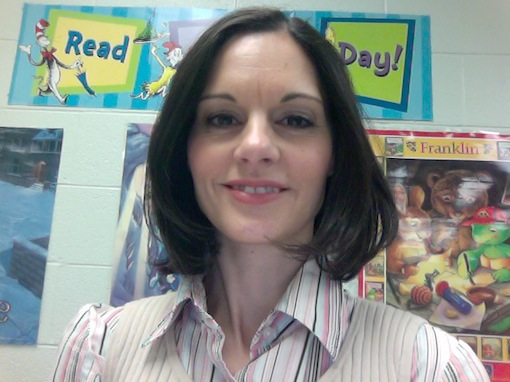Over the past couple of months, I have had the privilege of teaching in numerous schools and classrooms throughout the TDSB as a daily occasional teacher. I have been the ‘new kid at school’ so to speak, meeting new principals, other teachers and more students than I can count. The greatest benefit to meeting these new people and working in different classrooms has been being able to witness and learn from the great practices that are going on in the classrooms throughout the board, and taking these ideas with me as something that I might later implement in my own classroom.
In my conversations with other teachers, I am reminded of how lucky I am to be doing this. Some teachers were hired straight from pre-service, and developed their programs using the knowledge that they gained in pre-service and through the support of the school and board. One thing that I (and many new teachers that are navigating daily occasional teaching and LTO’s) have, that many experienced teachers did not have, is the opportunity to see and practice the other great ideas, lessons and systems that are going on in other classrooms. Some of the teachers that I have met in my day-to-day encounters expressed that feel that they ‘missed out’ on daily occasional teaching and getting to see great ideas from other classrooms that they could later experiment and make it ‘their own’. I have been fortunate to learn from so many of the great teachers and classrooms that I have taught in as an occasional teacher.
Referring to the ‘Continuum of Professional Learning and Growth’ in Chapter 8 of The Heart and Art of Teaching and Learning (ETFO, 2011), I have reflected on how I have evolved through the stages of the Continuum of Professional Learning and Growth. The stages of Orientation and Beginning Practice in my first year of teaching as a full-year LTO were challenging and rich in new learning. Taking in a multitude of information and making sense of how it applied to myself as a teacher was an intense and rapid learning curve- one that has resulted in a steadfast commitment to my own learning and improvement as a teacher.
Over the last couple of years in my continued work as an LTO, I have journeyed through the examination of my own practice, working to find the right fit of strategies that can be used for planning, managing my time, establishing an organizational structure, developing lessons, developing community in my classroom, utilizing school and professional supports, and the list goes on. For me, the Examination of Practice is the ongoing reflection that I do to help me identify how I can best serve and lead my students, and improve my practice. I feel that this is something I will never, and should never, stop doing for as long as I am an educator because it plays a large part in my commitment to being a better and more effective teacher. I have worked alongside great experienced teachers who make this a part of their daily and weekly practice, so that they can make improvements and adjustments daily and yearly. This is probably one of the things that contributes to how great they really are! I have taken note and learned so much from them.
Now, as a daily occasional teacher, teaching in other teacher’s classrooms, I get to observe, practice, and execute the great ideas that I haven’t yet learned or seen over the course of my teaching journey. It is inspiring to see the creative approaches to classroom management, community building, collaboration and so forth, seeing the things that I can later experiment with. Having such exposure, and the opportunities to Experiment and Apply are helping to inform my teaching identity and style (on a course to establishing my Embedded Practice), and I am grateful for having these opportunities.
There are many ways in which a teacher can arrive at opportunities for new learning, experimentation and application. We can collaborate with one another, attend workshops, take courses, read books, follow online blogs and we can also poke our heads into each other’s classrooms and find out what is going on ‘in there’. I have been fortunate that my teaching journey has led me to poking my head into many people’s classrooms, and learning from other teachers through my occasional teaching.
I am also thankful for the opportunity to write for this blog, where I can intentionally share my knowledge and practices with other beginning, experienced and occasional teachers. Intentional Sharing of Knowledge and Practice is located on the end of the Professional and Learning and Growth continuum (p. 122); I am able to do this now through this forum. This is just the beginning for me in the early stages of my career, but sharing knowledge is embedded in my practices as a teacher and as a colleague and it will continue to be a large part my approach in wherever my teaching career takes me. The other loggers have also broadened my perspectives, I have been mentored by their posts and they have helped me to identify other learning opportunities and priorities that will inform my embedded practices. Thank you! This year has been another vast learning opportunity, and I feel it is only just the beginning as I continue to navigate the challenging, rich and rewarding path of teaching.
 Most students, if asked, know not to bully or know not to litter. Yet, you may see those same students exhibiting behaviours that contradict what they know.
Most students, if asked, know not to bully or know not to litter. Yet, you may see those same students exhibiting behaviours that contradict what they know.






